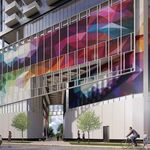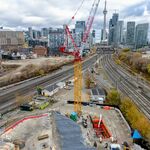TTC eyes doors at subway tracks
Official says study has been in works and not result of people falling or pushed off platform
May 25, 2008 04:30 AM
Paul Moloney
Staff Reporter
Potentially lethal tumbles onto subway tracks could be a thing of the past if the Toronto Transit Commission opts to install safety doors on the edge of subway platforms.
The TTC is in the process of hiring a consultant to report within 18 months on costs and benefits of installing the safety devices – used on some other subway systems – in all 69 existing stations and the six new ones to be built for the extension to York University.
The study has been in the works for months and was not a direct response to recent incidents where people have fallen or been pushed onto the tracks, TTC vice-chair Joe Mihevc said.
But the incidents emphasize the need to look hard at safety upgrades.
On Wednesday, a 46-year-old man reported being pushed onto the tracks at College station. He climbed back onto the platform and sustained minor injuries. Meanwhile, police have released a photo of the suspect.
Two weeks ago, Theresa Kelly tripped and fell onto the tracks at Spadina station. She managed to roll into a small alcove under the platform moments before a train pulled in. Kelly, 46, suffered a gash on her head, broken ribs and a hip injury.
Mihevc said safety doors could make people more confident using the subway, particularly when it's crowded.
"This technology is very good in a crowd-control situation," he said yesterday. "I think all of us know how uncomfortable it feels to be standing on the edge knowing a train is coming in your direction.
"Is there value in looking at it? Yes there is. Having doors there helps with safety and helps with the perception of safety as well."
First, though, the TTC must install a new signal system, a $342-million project to be completed by 2016 on the Yonge-University-Spadina line. It would allow precise train stops so the train doors could line up with platform doors.
The doors would allow easier boarding because passengers would know where to line up, and would block litter from blowing on to the tracks, causing fires.
However, it won't come cheap or quick, said TTC chair Adam Giambrone.
"Subway platform doors cost about $6 million a station and cannot be implemented until 2012, at the earliest, when the first phase of automatic train control will be in place between Union and Eglinton," Giambrone said.
The entire Yonge-University-Spadina line will have automatic control by 2016 but the Bloor-Danforth line will have to wait until the early 2020s, Giambrone estimated.
Mihevc said it might make sense to phase in the safety doors, station by station, starting with those that have narrow platforms such as St. George.
"It's still very preliminary," Mihevc said. "We're not saying that this is the way to go. We want to look at costs ... at effectiveness."
Edge doors are being designed for the Spadina extension to York University, slated for completion by 2015. But much depends on funds available, said former TTC chair Howard Moscoe, noting safety doors were initially in the $1 billion Sheppard line but scratched to save money.





